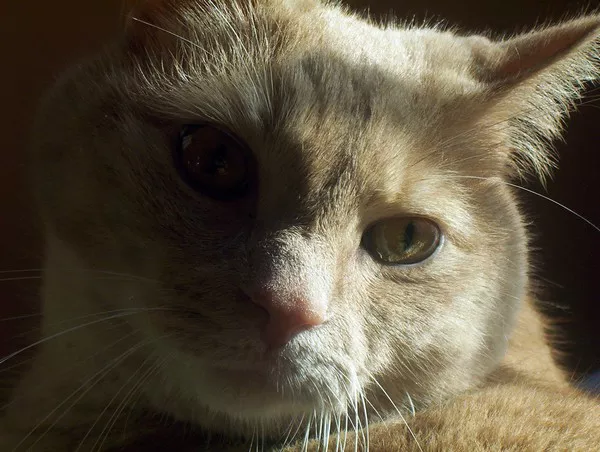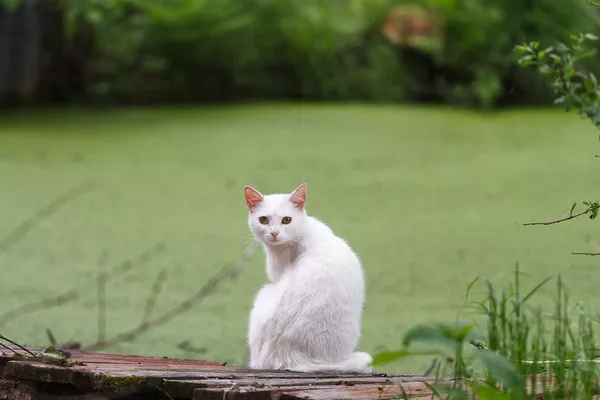Tricolor cats, often affectionately referred to as calico cats, are celebrated for their stunning and unique coat patterns that combine three distinct colors. These vibrant felines capture the hearts of cat lovers around the world with their striking appearances and playful personalities. The colors found in tricolor cats are not just random; they are the result of complex genetic mechanisms that dictate the pigmentation of their fur. In this essay, we will explore the various colors that can be found in tricolor cats, the genetic basis for these colorations, the different patterns they can exhibit, and the implications of these colors for breed identification and overall health.
Understanding Tricolor Cats
What Are Tricolor Cats?
Tricolor cats are defined by their unique coat patterns that typically feature three colors: white, black, and orange (or cream). This combination creates a visually striking appearance that has made tricolor cats particularly popular among pet owners. While the term “tricolor” often refers to calico cats, it can also encompass tortoiseshell cats, which have a similar color distribution but do not include white in their patterns.
The Genetic Basis of Tricolor Patterns
The colors in tricolor cats are primarily determined by genetic factors, particularly the X chromosome. Female cats have two X chromosomes (XX), which allows them to express both the black and orange color genes. Male cats, on the other hand, have one X chromosome and one Y chromosome (XY), which limits their color expression. As a result, the majority of tricolor cats are female, while male calico cats are rare, occurring only due to genetic anomalies.
The Role of Pigmentation
The colors seen in tricolor cats are a result of different types of pigmentation in their fur. The primary pigments involved in cat coloration are eumelanin (black) and pheomelanin (orange). The presence and distribution of these pigments, along with the influence of the white spotting gene, create the beautiful patterns we associate with tricolor cats.
The Color Palette of Tricolor Cats
Black
Black is one of the most common colors found in tricolor cats. It is produced by the presence of eumelanin, which gives the fur its dark hue. Black tricolor cats often exhibit a rich, deep color that contrasts beautifully with the lighter hues of orange and white.
Variations in Black
While black is typically a solid color, it can also appear in different shades, such as:
Jet Black: A deep, glossy black that reflects light beautifully.
Charcoal: A softer, muted black with gray undertones.
Smoky Black: A black coat that has a slightly faded appearance, often mixed with lighter hairs.
Orange
Orange is another key color in tricolor cats, produced by the pigment pheomelanin. This vibrant hue can range from a light cream to a deep, rich orange, and it often appears in various patterns across the cat’s body.
Variations in Orange
The orange coloration can take on different shades and patterns, including:
Ginger: A bright, warm orange that is often associated with classic tabby patterns.
Cream: A lighter, softer version of orange that can blend beautifully with white.
Buff: A pale, yellowish-orange that adds a unique tone to the tricolor palette.
White
White is a crucial component of the tricolor pattern, created by the white spotting gene that inhibits pigment production in certain areas of the cat’s coat. The presence of white can vary significantly, leading to different patterns and distributions.
Variations in White
The white coloration in tricolor cats can manifest in various ways, such as:
High White: A cat with a predominantly white coat, with only small patches of black and orange.
Low White: A cat with minimal white, where the colors are more evenly distributed across the body.
Mitted: A cat that has white on its paws and chest, creating a “mittens” effect.
Tortoiseshell vs. Calico
While discussing tricolor cats, it’s essential to differentiate between calico and tortoiseshell cats. Tortoiseshell cats exhibit a mix of black and orange without the presence of white. This results in a more mottled appearance, often described as a “patchwork” of colors. The distinction is important as it highlights the variety within the color palette of these beautiful felines.
Patterns in Tricolor Cats
The colors in tricolor cats can be arranged in various patterns, contributing to their unique appearances. The most common patterns include:
Classic Calico
The classic calico pattern features a mix of black, orange, and white in distinct patches. This pattern can vary widely in distribution, with some cats having large patches of color and others displaying smaller, more intricate patterns.
Dilute Calico
Dilute calico cats exhibit a softer color palette, with gray (instead of black), cream (instead of orange), and white. This gives them a more muted appearance while still maintaining the three-color pattern.
Calico with Tabby Markings
Some calico cats may also display tabby markings, which can add stripes or swirls to the color patches. This combination creates a visually striking effect that enhances the cat’s overall beauty.
Harlequin Pattern
In the harlequin pattern, the cat has a predominantly white coat with large patches of color, creating a striking contrast. The patches can be black, orange, or both, and the distribution is often asymmetrical.
Breed Variations and Their Colors
Domestic Shorthair
The Domestic Shorthair is one of the most common breeds to exhibit the tricolor pattern. These cats come in various colors and patterns, including classic calico and dilute calico. Their mixed heritage contributes to a wide range of color variations and patterns.
Persian Cats
Persian cats can also be tricolor, often displaying a luxurious coat that combines black, orange, and white. The long, flowing fur of Persians enhances the beauty of their color patterns, making them highly sought after among cat enthusiasts.
Maine Coon
Maine Coons, known for their large size and friendly personalities, can also exhibit tricolor patterns. Their thick fur can showcase the vibrant colors beautifully, and they are often seen in both classic and dilute calico varieties.
Ragdoll Cats
Ragdolls can also be found in tricolor patterns, particularly in the “colorpoint” variety. These cats typically have a white base coat with colored points (ears, face, paws, and tail) that can include black, orange, and cream.
The Significance of Color in Tricolor Cats
Aesthetic Appeal
The vibrant colors of tricolor cats contribute to their aesthetic appeal, making them popular choices for pet owners. Their unique patterns and color combinations can evoke admiration and affection, leading to a strong bond between the cat and its owner.
Breed Identification
Colors and patterns play a significant role in breed identification. While tricolor patterns can occur in various breeds, certain breeds are more commonly associated with specific color combinations. Understanding these associations can help potential cat owners make informed decisions when choosing a breed.
Health Implications
While color itself does not directly impact a cat’s health, certain breeds may be predisposed to specific genetic conditions. For example, some breeds associated with tricolor patterns may have health issues related to their genetic backgrounds. Regular veterinary check-ups and responsible breeding practices are essential for maintaining the health of these beautiful cats.
Caring for Tricolor Cats: Color Considerations
Grooming
The grooming needs of tricolor cats can vary depending on their breed and coat length. Long-haired breeds, such as Persians, require regular grooming to prevent matting and tangles. Short-haired breeds, like Domestic Shorthairs, may need less frequent grooming, but regular brushing can help reduce shedding and maintain coat health.
Nutrition
A balanced diet is crucial for maintaining the health and vibrancy of a tricolor cat’s coat. High-quality cat food that provides essential nutrients, including proteins, vitamins, and minerals, can help promote a healthy coat and skin.
Regular Veterinary Care
Routine veterinary care is essential for monitoring the health of tricolor cats. Regular check-ups can help identify any potential health issues early, ensuring that the cat remains healthy and vibrant.
Conclusion
In conclusion, tricolor cats are a beautiful and diverse group of felines characterized by their unique color combinations of black, orange, and white. The genetic basis for these colors is complex, involving the interplay of different pigments and the influence of the X chromosome. Understanding the various colors and patterns found in tricolor cats enhances our appreciation for their beauty and individuality.
Whether they are Domestic Shorthairs, Persians, Maine Coons, or Ragdolls, tricolor cats captivate us with their striking appearances and charming personalities. By caring for these vibrant felines and ensuring their health and well-being, we can enjoy the companionship of these remarkable animals for many years to come. The colors and patterns of tricolor cats not only reflect their genetic heritage but also contribute to the joy they bring into our lives, making them cherished members of our families.
Related topic:

























